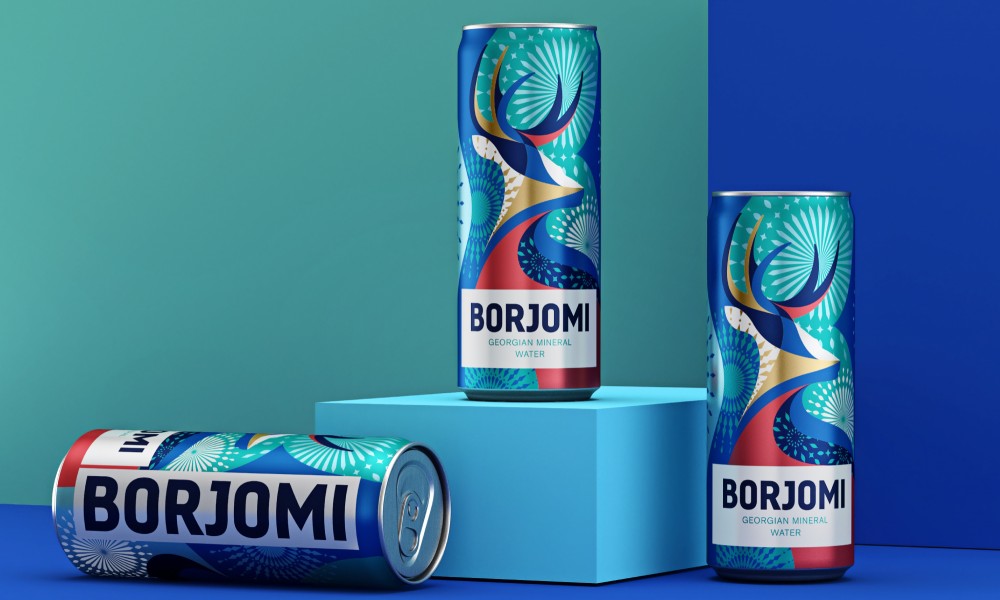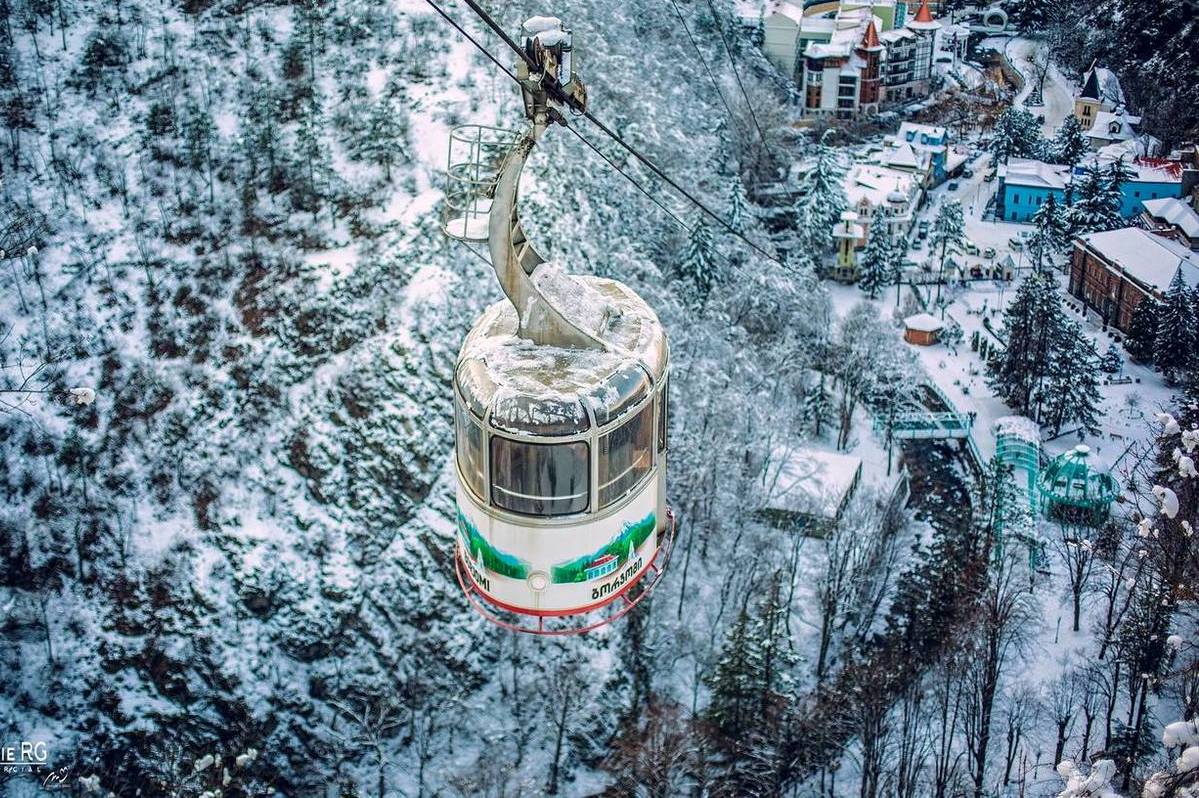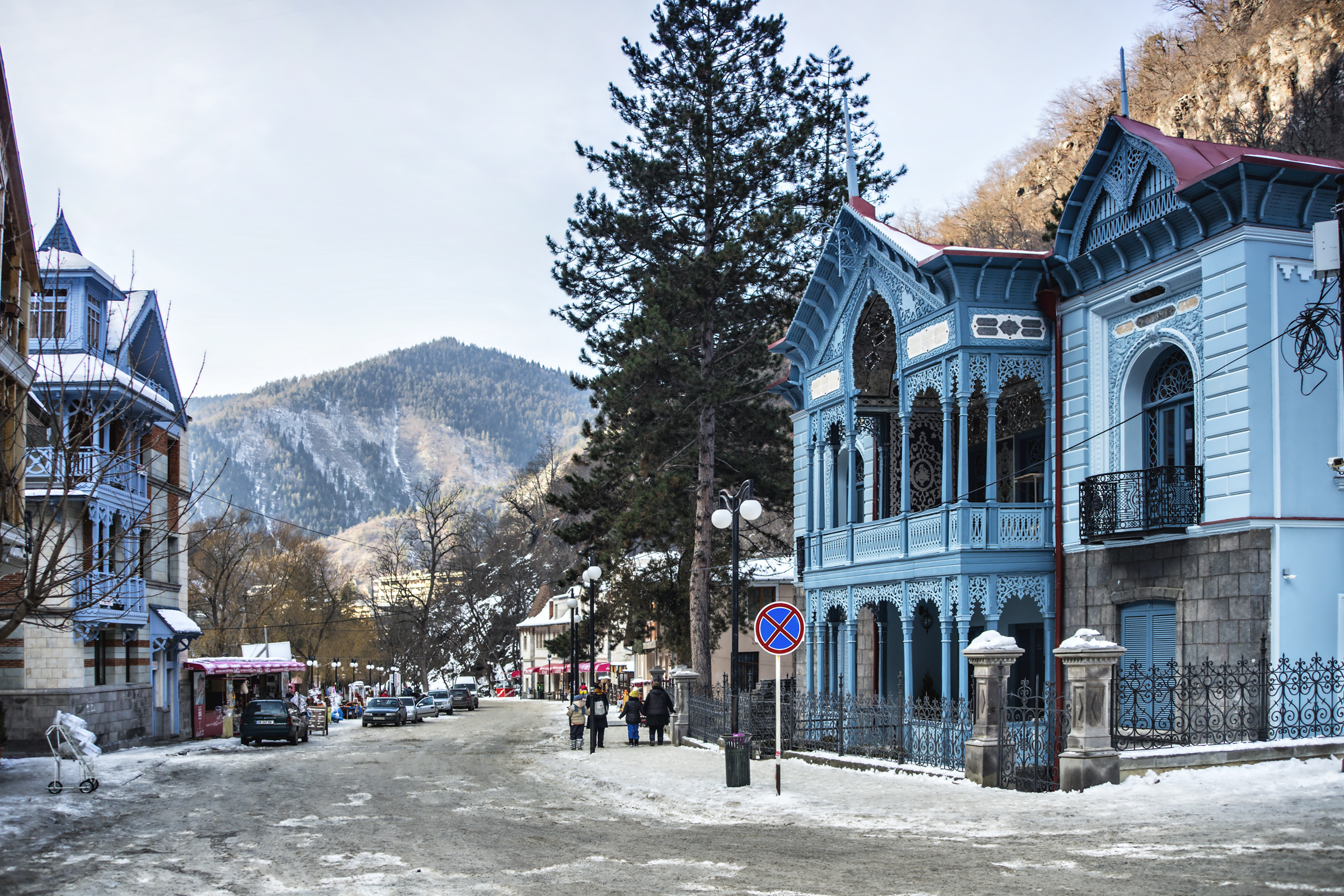Brand history: Borjomi mineral water

The main export product of Georgia, which helps satisfy thirst and cure many diseases, Borjomimineral water has already acquired dozens of myths, legends and funny stories. In this an argosy of local folklore, it is difficult to distinguish true facts from beautiful fiction, especially since authors of most of the stories are the Georgians, world famous admirers of witty stories and long toasts with jokes and all types of funny humour tales. The official history of Borjomi mineral water springs backs to the 1830s-1840s, when Russian generals who served in the Caucasus, accidentally discoveredhealing powers of the area's mineral springs. However, there is another story, according to which, for several thousand years the ancestors of today's Borjomi residentsenjoyed local health-giving mineral water, both for drinking and taking thermal baths to keep body in tone. Allegedly, they discovered it when a deer shot on the hunt, fell down into the spring, jumped out unharmed, and gallopedinto the forest away from confused hunters. Photo pangeatravel.ge
Photo pangeatravel.ge
The very word borjomi, by the way, means "fortress wall" and "war" - looking at the cosy resort town, protectedfrom enemies by gorge walls, you understand that you cannot come up with a better name for this place. This settlement with population of 13 thousand, in its present form, appeared thanks to mineral sources when in the middle of the 19th century the best Petersburg doctors and biologists went here to check how officers and soldiersare treated on water. Scholars were amazed, sincewater running over to the surface till present without any pumps, contains almost all the useful elements of the periodic table, and its purity due to filtration through soils and underground rocks is close to absolute. Since then, quality has been closely monitored, and for almost two hundred years of observations, the composition of the water has not changed even by molecule! The government decided to do business on the springs right after the positive verdict of doctors and biologists: the relatives of the Russian Tsars were engaged in the Borjomi project until the fall of the Romanov dynasty. The project was ambitious: to launch a mass production of mineral waterand to build a resort in thishard-to-get gorge that is not inferior to either Karlovy Vary or Vichy. Photo ge-o-graphy.com
Photo ge-o-graphy.com
Through the mountains, remote Georgian villages and turbulent river of Kura, they built a narrow-gauge railway, electricity, telegraph, bridges to Borjomi - just within20-30 years. Same time, in 1860-1870 they quickly built bottling plants, transport infrastructure to deliver water to the major cities of the Caucasus and further to St. Petersburg, Moscow, and Kiev. Interestingly, until the 1950s, bottles at the local glass factory were blownmanually, job on the water production was incredibly prestigious, and people worked for decades at the plant. By the end of the 19th century, Borjomi became one of the most popular resorts of the Empire, the recreation destination for wealthy people and even the royal family - summer residences and palaces were built for them, nowadays they are used for tourists excursions. The agricultural mountainous region, thanks to the water, started living an active life much visited by artists, writers and businessmen.![]() Photo reynoldsandreyner.com
Photo reynoldsandreyner.com
In the 20th century, literally at its very beginning, Borjomi gained world recognition because the royal chemist Friedrich Moldenhauerdeveloped a method that allowed extending the shelf life of bottled water. He invented to saturate it with carbon dioxide. Thanks to this, residents of European cities at exhibitions in German Dresden and Belgian Spa learned about the miracle water from Georgia. Western experts immediately appreciated its healing properties, noting that the main feature of Borjomi is that, rising to the surface from a depth of 200 to 1500 meters, water passes through various rocks that purify and enrich it, and especially through volcanic layers, giving the most important microelements - calcium, magnesium, sulphur and others. This composition especially helps solving problems of gastrointestinal tract.
Not surprisingly, the Bolsheviks who succeeded the Romanovs appreciated the resort and its waters: Stalin and other party leaders often came here on vacation and sent their relatives to the local clinics. Soviet industrialization, of course, changed the concept of the city - a bourgeois health care town with European streets and aristocratic moods, had to remain in the past. it was replaced by typical communist city-factory, so the enterprise's capacities increased, new bottling workshops opened, new experts were engaged. All this allowed increasing the volume of export - in the 1980s, more than 400 million bottles were shipped abroad per year! Interestingly, the demand was in the "enemy" Western countries and even in the United States, which paid for water by foreign currency. Photo bigpicture.ru
Photo bigpicture.ru
Despite such a large scale of consumption, according to recent estimates of scientists, the reserves of curative water in Borjomi will surely last for several centuries. Today, this water is still popular, and after the fall of production in the crisis of the 1990s, the volume of exports starts to approach the Soviet one - for Georgia this is not just a "bread-making" enterprise, but also a symbol, national pride, therefore, the plant has the most modern equipment, and a job here is still a great privilege. Around the workshops, there is a beautiful Borjomi Park, which is very pleasant for a walk, and there you cansip water pouring from underground. It tastes and smells stronger than the bottled product. In the production process, it is slightly purified and saturated with natural CO2, which allows it to be stored longer. Anyway, it is a matter of taste, local residents, for instance, prefer drinking "from the ground", soremember that bad Borjomiwater just does not happen!
Interesting facts about the brand:
As of today, Borjomi water is officially represented in 41 countries.
The water temperature at the time of reaching the surface is 37-38 °C.
The total length of the pipeline "source - plant" is 25 kilometres.
There are 22 wells designed for water extraction near the town, only 9 of them are in operation, the rest are reserve wells.
Cover photo capitalbrew.co.za





















